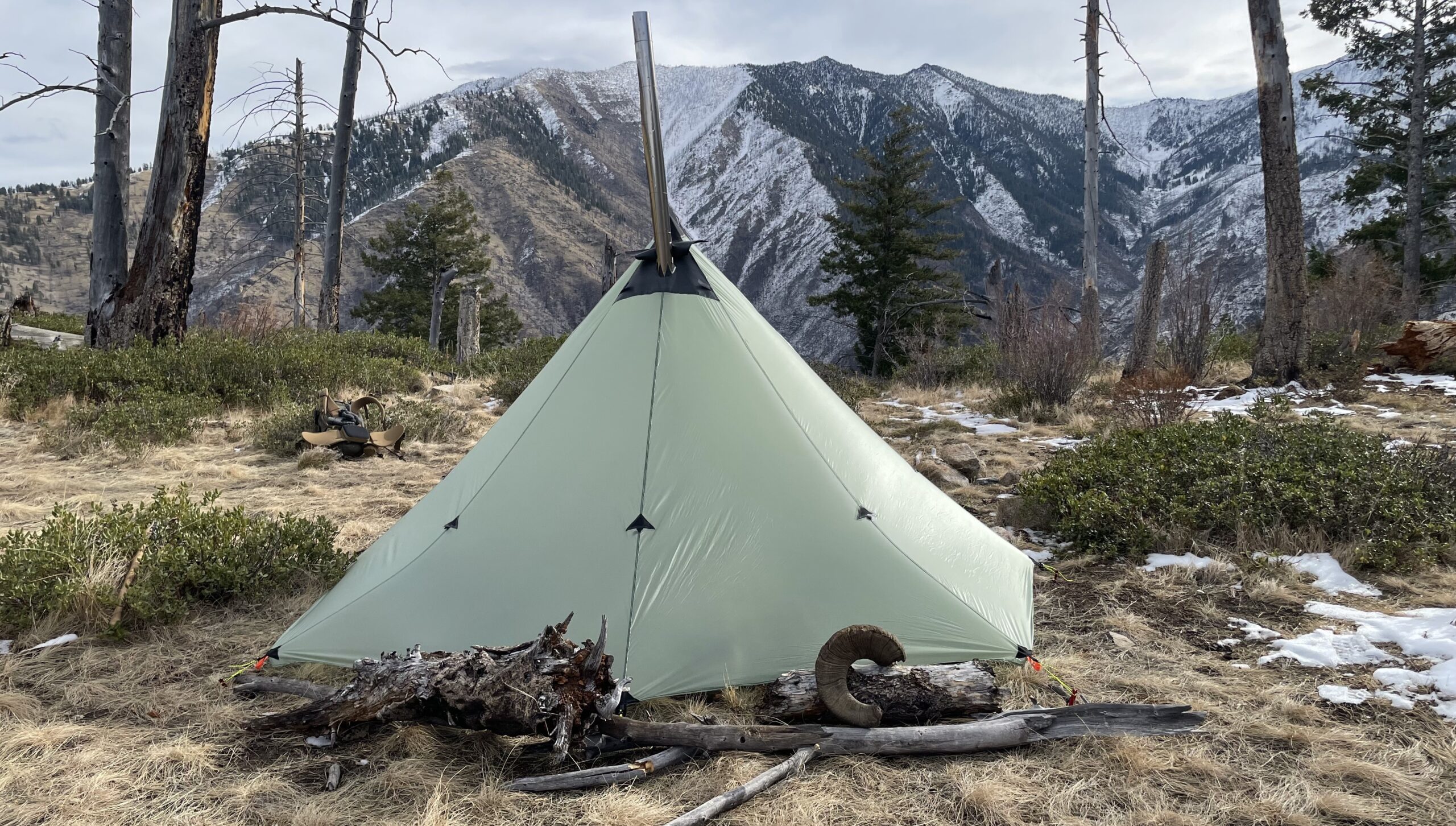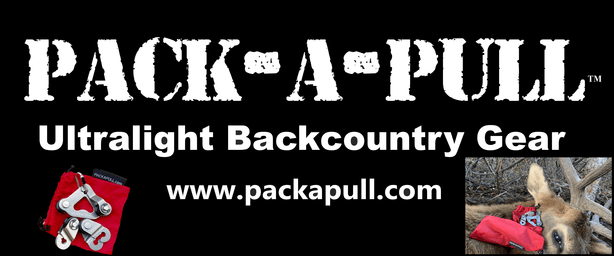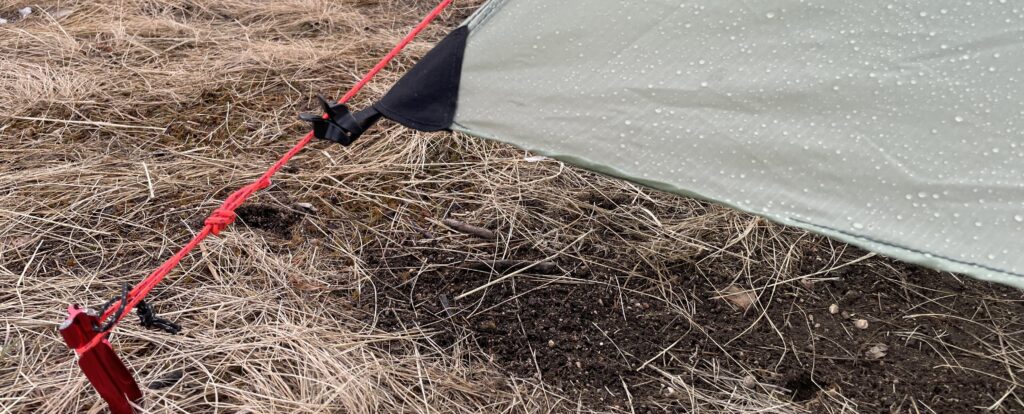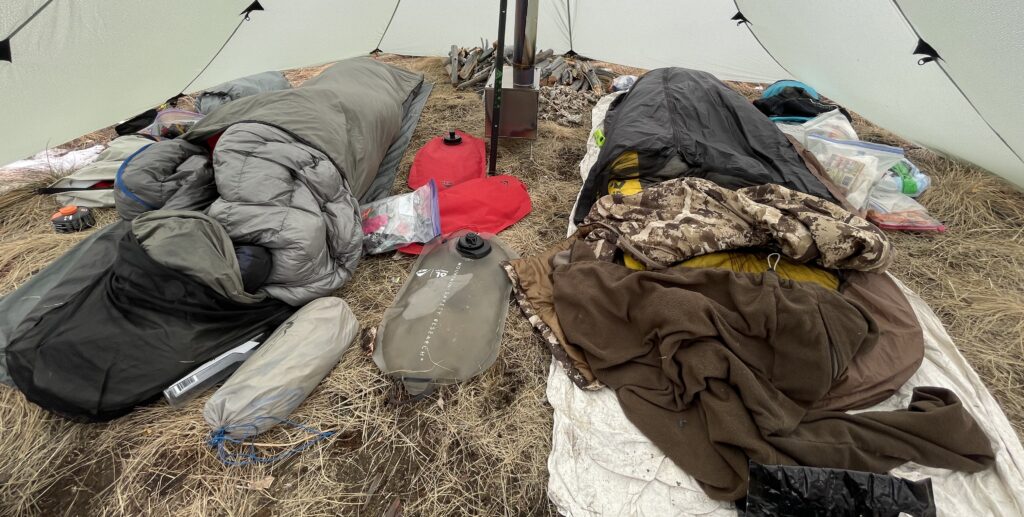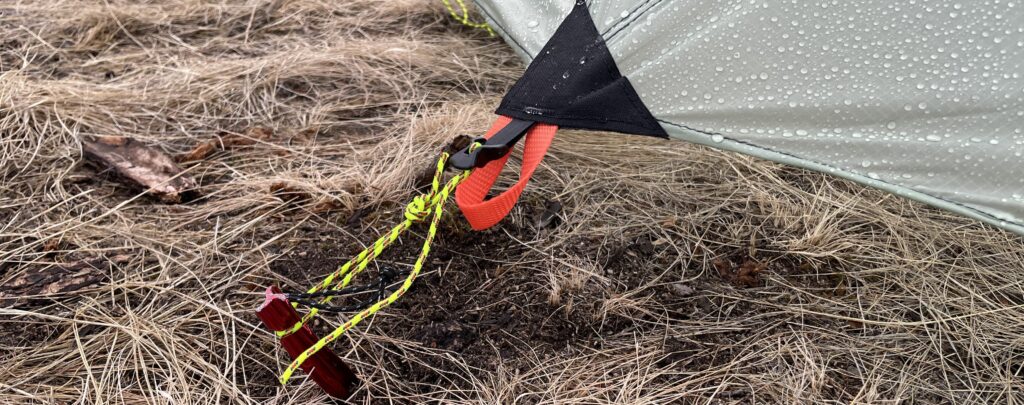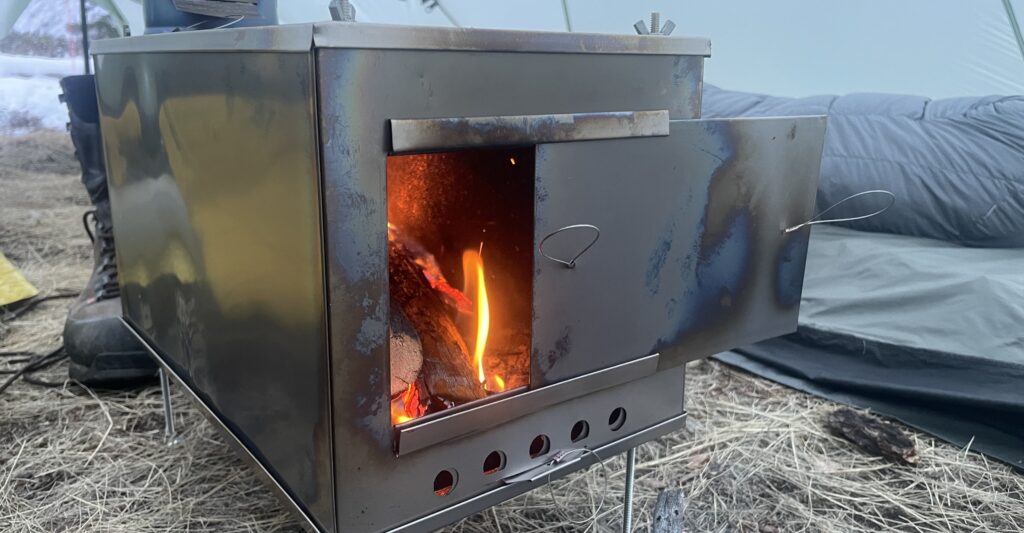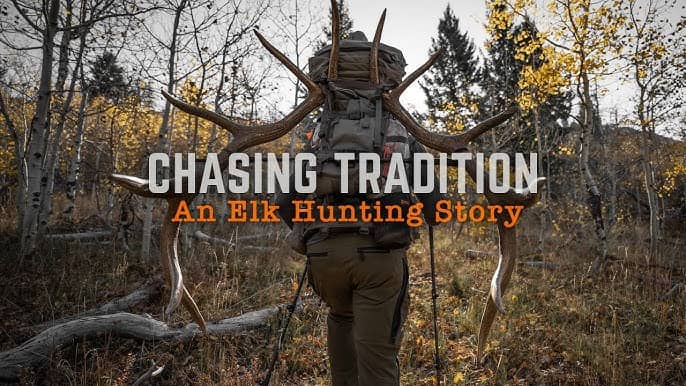The combination of adverse conditions provides the perfect opportunity to put the Seek Outside Twilight hot tent to the test. What comes to mind when you think about late-season backpack hunts? Cold? Definitely. Snow? Likely. Wind? Inevitable.
I’ve had my eye on Seek Outside’s hot tent lineup for a few years, and I was especially intrigued when they released the Twilight 3P (three-person). It features several innovative elements—like a vestibule and a zipperless entry—not normally found in backcountry tipi-style tents. Before we knew it, Seek Outside had sent a Twilight and stove our way, just in time for my fall hunts.
How It Was Tested – Seek Outside Twilight Hot Tent
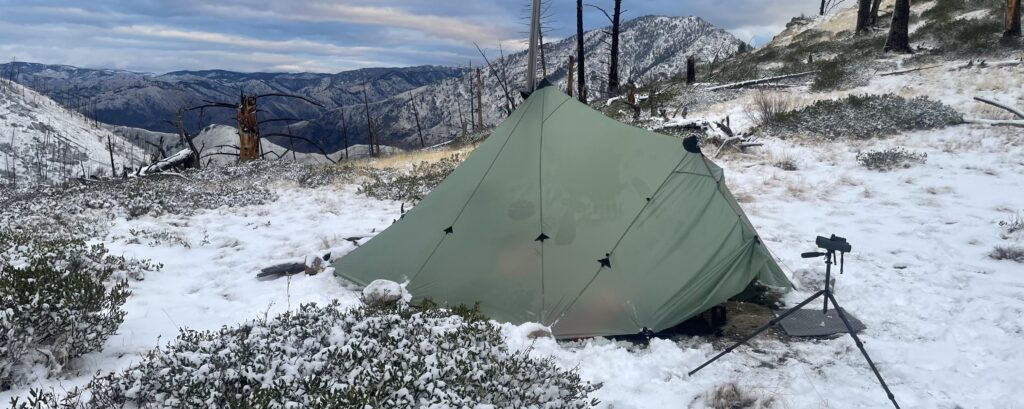
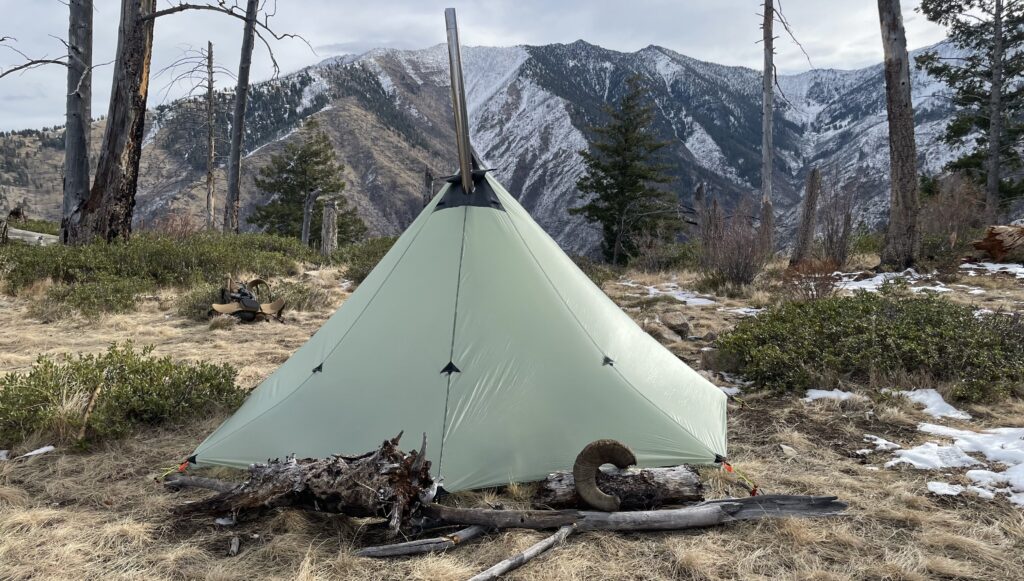
I was fortunate to have a late-season Idaho wilderness mule deer hunt on my schedule that seemed like a strong candidate for pushing this tent to its limits. We flew in, established a base camp at the airstrip, and then packed the Twilight and eight days’ worth of provisions several miles into a more remote location where we hoped to find a good rutting buck or two. Conditions were fairly mild upon arrival, but a storm was in the forecast.
How It Was Tested – Seek Outside Twilight Specs
Seek Outside describes the Twilight as a lightweight backcountry palace. It sounds promising. Let’s take a look at some of the basic specifications before diving into the performance details.
| Seek Outside Twilight Tent Specs | |
|---|---|
| Weight – Shelter Only | 35 oz |
| Weight – Stakes | 14 oz |
| Weight – Poles (2) optional | 17 oz |
| Weight – Floor/Liner, optional | 25 oz |
| Weight – Fire Mat, optional | 12 oz |
| Peak Height | 6′ (rear), 4’8″ (front/vestible |
| Interior Area | 80 sq ft (sleep area), 25 sq ft (vestibule) |
| Length | 14′ |
| Width (tapered) | 10’4″ (rear), 9’4″ (front) |
| Stakes Needed | 8 |
Materials – Seek Outside Twilight Backpacking Hot Tent
The Twilight 3P uses 30D silnylon (silicone-impregnated nylon) for the shelter body. This ripstop-woven material is designed to minimize damage if a tear occurs. The shelter comes standard with a sewn-in, silicone-coated fiberglass stove jack that’s rated to withstand temperatures up to 3,000°F.
My tent came with two carbon fiber poles: a taller one for the rear sleeping area (the Cimarron carbon pole) and a shorter one (Seek Outside Carbon Pole for Trekking Pole Tents) for the front vestibule. These poles are optional—you could instead use trekking poles or cut natural wooden poles on-site. Seek Outside has incorporated reinforced top cones, made from layered X-Pac and Dyneema materials, into the shelter body for added durability and abrasion resistance where the poles interface.
Make sure to check out our other gear reviews and the Backwoods Pursuit YouTube Channel to help you decide what gear will help you stay out in the field longer!
The tent includes six robust twisted stakes and eight standard stakes. While Seek Outside indicates that the tent can be pitched with just the eight standard stakes to minimize weight, as I’ll explain later, the twisted stakes turned out to be essential during our trip. The package also comes with cordage that can be used with supplemental guy-out points for added stability in high winds.
My tent package included the optional floor system and integrated liner. The floor is made of 30D silnylon with Cordura reinforcements at the pole contact points. Since the floor material isn’t heat-resistant, Seek Outside offers a reflective, fire-retardant mat to place under the stove when using the floor.
Finally, the Twilight must be seam-sealed to be fully waterproof. Seek Outside includes a tube of seam sealer with the tent, but also offers—and recommends—factory-applied seam sealing before shipment for an additional $65.
Features and Function – Seek Outside Twilight Backpacking Hot Tent
SLEEPING AREA: The Twilight’s main sleeping area is similar in size to Seek Outside’s popular Cimarron, but the key differentiator is the integrated vestibule at the front of the shelter. This design was achieved by using a second, shorter pole to support the vestibule. You enter through the front door, where you can drop your pack, weapon, or other gear, and then proceed into the sleeping area. The second pole adds a bit of weight, but the extra floor space helps keep the sleeping area from getting too cluttered. The tradeoff is that you have to navigate around your gear when exiting.
ZIPPERS: You may have noticed there’s been no mention of zippers—that’s because the Twilight features a zipperless entry. Rather than a traditional zipper, which can fail due to stress or debris, the Twilight uses a guy line with a LineLoc along the front beak that allows you to slide the fabric up or down for entry. Downsides include a reduced entry height compared to a conventional tipi door and increased susceptibility to wind—so it’s best to orient the entry away from prevailing winds.
STOVE POSITION: The stove jack is centered in the sleeping area just behind the main pole. With the stove body and door facing the rear, it takes up minimal sleeping space. However, because of the slope at our site and expected wind direction, this setup placed our feet near the stove. While heating performance was solid, it was inconvenient to shimmy to the back of the tent to stoke the fire.
POLES: For this trip, we used the carbon fiber poles provided by Seek Outside. They’re convenient and adjustable, but they add over a pound to your pack. In the future, if I’m heading to an area with adequate timber, I may save weight by cutting poles on-site. Alternatively, one could use linked trekking poles, but I prefer to keep mine with me during the day for stability and as a shooting aid.
HEIGHT: At 6’1″, I can’t quite stand upright in the shelter, but the height is sufficient for comfortable entry and exit. The sleeping area is long enough to comfortably accommodate my height with extra room.
A unique design feature compared to other tipis is that Seek Outside includes both standard corner loops for secure staking and short guy lines with LineLocs just above them. This allows you to pitch the shelter off the ground for better ventilation.
I’ve always considered tipis to be floorless, but the Twilight has an optional floor and liner that extends a quarter of the way up and attaches to the tent wall. This setup helps manage ground moisture, prevents condensation from reaching your gear, and reduces drafts. The downside is cost (over $300 with the fire mat) and weight (37 oz. including the fire mat), which might be fine for a base camp or pack-supported hunt, but it’s more than I typically carry on a backpacking trip.
the Stove – Seek Outside Twilight Backpacking Hot Tent
A hot tent wouldn’t be complete without a stove. Seek Outside recommends pairing the Twilight with the Large U-Turn, Large Standard, or SXL Standard stove. Wanting to avoid the assembly hassle I’ve experienced with cylinder stoves, I chose the Large Standard—a rectangular model—for this trip. Made from titanium, it has an 8.25” x 8.25” x 14” burn chamber. Packed with legs, hardware, a damper, and a 7.5’ stovepipe, my setup weighed about 50 ounces.
Before the hunt, I did the necessary burn-in to form the pipe and practice assembly. In the field, even with cold fingers, I found the rectangular stove much easier to assemble than previous cylindrical models. After setting it up and gathering wood for an hour, we were good to go. We had fairly dry fuel, but for new users: stack your small kindling near the back under the pipe and be prepared to babysit the fire at first. You want the pipe to draft quickly and draw smoke out of the tent.
The stove performed well, keeping us warm inside the Twilight. Like most ultralight stoves, it uses small-diameter fuel and won’t burn all night. Our routine was to fire it up after dark, keep it going for a couple hours while drying gear and prepping for bed, and then load a few larger (~3”) logs, dampen the airflow, and let them burn slowly while we drifted off. That was usually enough to stay warm until morning.
Unless you plan to get up every hour or two to stoke the fire, plan your sleep system accordingly as you’ll still need a sleeping bag and pad that are adequate for the overnight temperatures you expect.
experience and Impressions – Seek Outside Twilight Hot Tent
LIKES:
Space: For the amount of space it offers, the Twilight 3P is impressively packable. My partner and I split the load—one carried the tent and poles, while the other carried the stove. Each of us had about 3 pounds, which is pretty reasonable for a mobile, late-season hot tent setup.
Setup: Setup was straightforward. We arrived at our first mountain site a few hours after dark following a tough climb, with temps quickly dropping. We prioritized shelter setup, and after staking the corners and front/rear beaks, it took just a few minutes to finish the rest and set up the poles. We were grateful to crawl into our sleeping bags quickly and start recovering.
DISLIKES:
Entry: My first issue with the tent is the entry. The vestibule is lower than the main body, and the front beak fabric that forms the zipperless entry can only slide up so far before it hits tension or reaches the maximum vestibule height. I often had to stoop or crawl in on hands and knees. Not a big deal in dry conditions—similar to my early-season tarp—but tedious and uncomfortable when the ground is wet or frozen.
Staking System: My second key takeaway is the staking system, which is both a strength and a potential weakness. Initially, we pitched the tent using the short LineLocs, elevating the base slightly off the ground and providing excellent ventilation.
I was impressed that we had virtually no condensation. But when a storm rolled in with strong, gusty winds, this setup became a liability. Around midnight, we scrambled to swap the short guy lines for the lower, standard stake loops. If we hadn’t, there’s a good chance one of the lines—or a stake—could have failed, possibly collapsing the tent. Huge credit goes to the robust twisted stakes Seek Outside includes; they made a big difference compared to standard lightweight stakes.
Stove positioning: Per the manufacturer’s recommendation, we oriented the entry away from the wind, but on sloped terrain, that meant our feet were positioned closer to the stove. This was fine for heat distribution but inconvenient when it came to stoking the fire. With a short burn time and multiple reloads each night, that inconvenience quickly adds up.
Strengths:
- Lightweight relative to the interior space
- Multiple pitching options to prioritize either ventilation or stability
- Optional floor and liner help manage moisture and condensation when weight isn’t a concern
- Stove performed well and was easy to assemble
Weaknesses:
- Single, low entrance can be awkward—especially in poor conditions
- Requires careful assessment of wind strength when choosing between LineLocs and standard stake loops
- Zipperless entry orientation may force inconvenient stove placement, depending on site slope
Conclusion: Seek Outside Tents
The Seek Outside Twilight 3P Hot Tent is a solid hot tent option for late-season hunters. It kept us warm and secure in challenging weather. The vestibule adds gear storage space compared to a traditional tipi like the Cimarron– and does so at a slightly lower total weight. However, it comes with tradeoffs: a single low entrance, potential stove placement inconvenience, and a learning curve around staking strategy.
Personally, I lean toward having a second, higher door like the Cimarron offers, but the Twilight offers better protection for the sleeping area during entry and exit—reducing the risk of letting snow or rain inside. Seek Outside makes several high-quality hot tent options, and the Twilight is no exception. Which one is right for you will depend on your priorities—and hopefully, the key strengths and weaknesses outlined in this review will help guide that decision.
Subscribe to Backwoods Pursuit to get Your FREE Backcountry Gear Worksheet!!!
Dial in your gear list, calculate your pack weight, and lighten up your pack with this handy tool!


